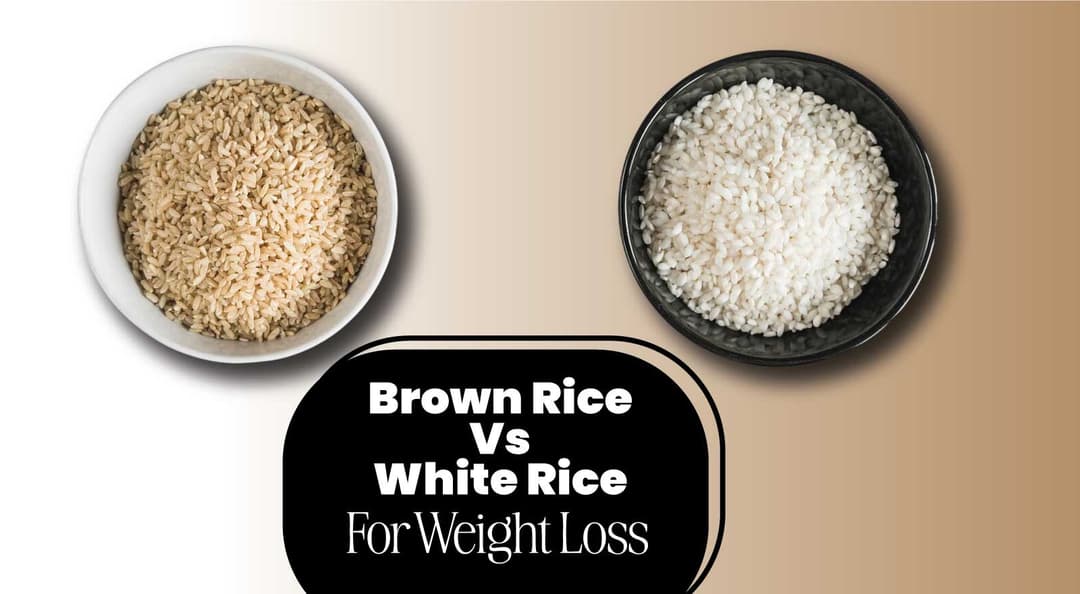The ancient practice of yoga offers a holistic approach to achieving digestive well-being, recognising that overall health hinges on optimal digestive function.
Yoga experts assert the pivotal role of yoga in fostering healthy digestion and mitigating digestive disorder symptoms. Their rationale: through a blend of physical postures, breath control, and mindfulness; they promote enhanced overall digestive well-being.
The blog reveals the transformative potential of particular yoga for digestive health, breathing exercises and mindfulness practices on our digestive system. It also delves into how we can use yoga to enhance digestive health; addressing its profound influence on energy levels, immune response and mental wellness. Keep exploring!
Table Of Contents
- Understanding Gut And Brain Connection
- Yoga For Gut Health: Benefits And Target Muscles
- Yoga For Intestinal Problems
- Yoga For Gut Health For Beginners
- Dietitian’s Recommendation
- The Final Say
- FAQs
- References
Understanding The Gut-Brain Connection
The gut-brain connection, a complex and bidirectional interaction, allows signals to pass between your digestive system and central nervous system. Health or disease in either component can significantly impact the other. The enteric nervous system, vagus nerve, and gut microbiome emerge as key players within this intricate relationship.
Recognizing the intricate relationship between the gut and brain is essential; indeed, this connection hinges on your enteric nervous system, also known as the "second brain." It communicates with your central nervous system: a dynamic interaction that impacts not only emotions but also triggers conditions such as irritable bowel syndrome, anxiety, tension indigestion and stress.
The pivotal role of yoga for digestive health in nurturing the gut-brain connection stems from its emphasis on mindfulness and stress reduction, particularly for digestive health.
Yoga For Gut Health: Benefits And Target Muscles

To comprehend the digestive system's functioning, understanding yoga and meditation's role is crucial. The digestive system comprises a network of diverse organs, microorganisms, and enzymes cooperating to metabolize ingested food; this process allows your body to absorb nutrients efficiently while eliminating toxins effectively. Therefore—here, you will get to know about yoga for digestive health: these poses will aid in fostering an optimal gut condition for yourself–a contented gut indeed!
1. Diaphragmatic Breathing (Belly Breathing)
Diaphragmatic breathing refers to engaging your diaphragm in order to take deep breaths. In this, you will notice your stomach rising and falling.
Instructions
- Place one hand on your chest and the other on your abdomen after finding a comfortable and quiet to sit or lie down.
- Allow your diaphragm to expand, inhale deeply through your nose, and raise your abdomen.
- Letting your abdomen fall, exhale slowly through your mouth.
- Ensuring that chest movement is minimal, focus on the rise and fall of your abdomen.
Benefits
- Promotes relaxation, which activates the parasympathetic nervous system.
- Bolsters oxygen supply to the digestive organs.
- Reduces tension and stress, which can contribute to improved digestive issues.
Target Muscles
Abdominal muscles, intercostal muscles, and Diaphragm.
2. Nadi Shodhana (Alternate Nostril Breathing)
Another yoga for digestive health is Nadi Shodhana, or alternate nostril breathing, which is a powerful breathing practice with wide-reaching benefits. This yoga pose is practised for clearing and purifying the subtle channels of the mind-body connection.
Instructions
- With a straight spine, sit comfortably.
- Inhale deeply through the left nostril by using your right thumb to close off your right nostril.
- Exhale by releasing the right nostril after closing the left nostril with your right ring finger.
- Release your left nostril and inhale through your right nostril after closing the other one and exhale.
- Focusing on the breath and maintaining a calm rhythm continues this alternate pattern.
Benefits
- Balances the two hemispheres of the brain.
- Reduces stress and calms the mind.
- Promotes a sense of harmony and balance.
Target Muscles
The focus is on regulating breath and balancing; No specific muscles are targeted.
3. Apanasana (Knees-to-Chest Pose)
This is a relaxing supine asana performed at the end of a yoga sequence. This posture helps in moving toxins downward and out of your body. It is one of the most effective yoga for digestive health.
Instructions
- With your legs extended, lie on your back.
- Bring your knees toward your chest and inhale.
- Gently hug your legs toward your chest by clasping your hands around your knees.
- Breathe deeply, hold the position, and feel the stretch in your lower back and abdomen.
Benefits
- Aids in waste elimination massages in the ascending and descending colon.
- Relieves gas and bloating.
- Lower back muscles get stretched.
Target Muscles
Abdominal muscles, lower back muscles, and hip flexors.
Yoga For Intestinal Problems
Here are some of the poses of yoga for weak intestines that you must know:
1. Pawanmuktasana (Wind-Relieving Pose)
This pose helps you by relaxing your abdomen, hips, thighs, and buttocks. To do this:
- Bring one knee at a time towards your chest after lying on your back and clasp your hands around it.
- This helps in releasing gas, improving digestion and reducing bloating.
2. Balasana (Child's Pose)
Balasana also known as the child's pose, is a yogic asana which is ideal for newbies and expert practitioners. To perform this pose:
- Sit back on your heels, kneel on the mat, and stretch your arms forward.
- This pose relieves stress and boosts relaxation that can contribute to intestinal issues.
3. Supta Baddha Konasana (Reclining Bound Angle Pose)
Supta Baddha Konasana benefits your pelvic region, inner thighs, and knees to get a very necessary and good stretch. Any type of mild depression, anxiety or tension can get better with this asana. To do this:
- Bring the soles of your feet together after lying on your back, and let your knees fall to the sides.
- This gentle pose can promote digestion and ease tension in the pelvic region.
Yoga For Gut Health For Beginners
Along with yoga for digestive system, here are some of the best yoga poses for gut health that beginners can follow regularly:
| Mountain Pose (Tadasana) |
|
| Cat-Cow Stretch (Marjaryasana-Bitilasana) |
|
Bridge Pose (Setu Bandhasana) |
|
| Corpse Pose (Savasana) |
|
Dietitian’s Recommendation
A dietitian's advice on yoga for digestive health involves combining yoga poses that target the abdominal region, like twists and forward bends, with diaphragmatic breathing to enhance digestion. Take help from your healthcare professional for personalised recommendations based on individual health needs. Also, prioritise probiotic-rich foods for a healthy gut microbiome. A balanced diet rich in fibre, hydration, and mindful eating practices. Manage stress through yoga to reduce the impact on the gut.
Dt-Akshata Gandevikar
The Final Say
Now you know whether yoga is good for gut health or not after reading the blog. The instructions, benefits, and targeted muscles outlined for each practice offer a comprehensive understanding of how yoga can positively impact your digestive system. Incorporating these yoga practices into your routine provides a powerful toolkit for promoting digestive health.
Embrace the transformative potential of yoga for digestive health and unlock the healing power within your own body. By cultivating a regular yoga practice, you embark on a journey that supports your physical well-being and nurtures the vital connection between your body and mind.
FAQs
1. Which yoga is best for digestive system?
Pavanmuktasana, Ardha matseyandrasana and Supta Matseyendrasana are the best yoga poses for digestive system.
2. Can yoga heal your gut?
Some mudras of yoga help to make digestion healthy and smooth and healthy the gut by cleansing the body.
3. Can yoga reduce gastric problems?
Yes, yoga can be effective in reducing gastric issues. Poses like Pavanmuktasana, Bridge Pose (Setu Bandhasana) and Child's Pose (Balasana) can help alleviate symptoms of indigestion.
4. Does yoga speed up digestion?
Yoga does not speed up digestion but works as a helping hand in aiding better digestion.
5. What are the best yoga exercises for gut health?
Here are the yoga exercises for gut health:
- Child's pose
- Bow Pose
- Triangle pose
- Camel pose
- Bhujangasana
- Paschimottasana
- Forward fold
6. What are the yoga exercises for healthy digestive system?
Here are 5 best yoga that you can follow:
- Vajrasana (Thunderbolt Pose)
- Ardha Matsyendrasana (Half Spinal Twist)
- Pawanmuktasana (Wind-Relieving Pose)
- Supta Matsyendrasana (Supine Spinal Twist)
- Bhujangasana
7. How to improve your digestive system by yoga?
Regular practice of yoga, especially poses that involve twisting and forward bending, helps stimulate digestion, reduce stress, and enhance overall gut function. Focus on poses like Downward Dog (Adho Mukha Svanasana) and Seated Forward Bend (Paschimottanasana).
References
About ToneOp Fit
ToneOp Fit is a platform dedicated to improving and maintaining good health through a comprehensive range of goal-oriented health plans with up to 3 Coach support. With a range of Weight Management, Medical Condition, Detox Plans, and Face Yoga Plans, the app also provides premium health trackers, recipes and health content. Get customised diet, fitness, naturopathy & yoga plans and transform yourself with ToneOp.









































